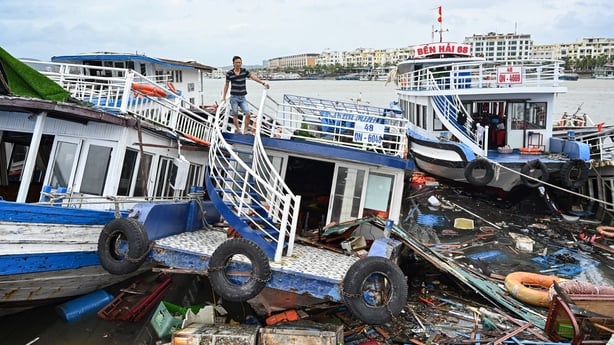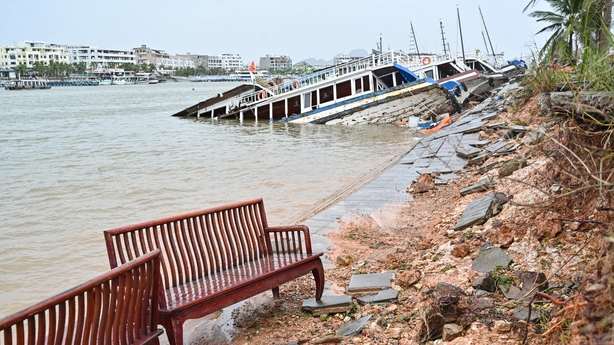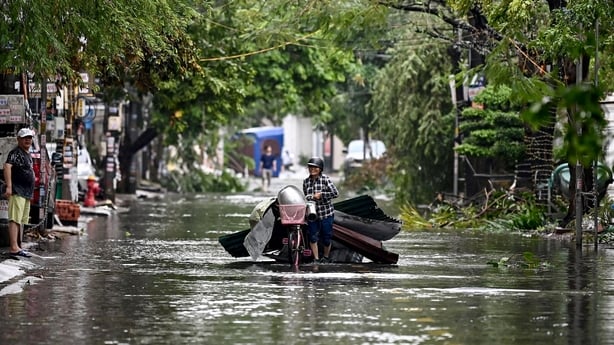Super Typhoon Yagi ripped roofs off buildings, sank boats and triggered landslides in Vietnam, leaving at least nine people dead, after tearing through southern China and the Philippines.
A family of four was killed in a landslide in the mountainous Hoa Binh province of northern Vietnam early this morning, according to state media.
The landslide happened around midnight, after several hours of heavy rain brought by Yagi, when a hillside gave way and collapsed onto a house, VNExpress said, citing local authorities.

Yagi, which has devastated infrastructure and uprooted trees, made landfall in northern Vietnam yesterday, packing winds exceeding 149km/h.
Four people were killed yesterday as roofing flew through the air, disaster management authorities said.
A man in Hai Duong province was killed on Friday when heavy winds brought down a tree.

Several areas of the port city of Hai Phong were under half a metre of flood waters, and electricity was out, with power lines and electric poles damaged.
At Ha Long Bay, a UNESCO World Heritage site about 70km up the coast from the city, fishermen were in shock as they examined the damage.
At least 23 boats were seriously damaged or sunk at the Hai Au boat lock on Tuan Chau island, according to local residents.
Rooftops of buildings were blown off and motorbikes were left toppled over in piles of building rubble and glass.

Before hitting Vietnam, Yagi tore through southern China and the Philippines, killing at least 24 people and injuring dozens of others.
Typhoons in the region are now forming closer to the coast, intensifying more rapidly, and staying over land for longer due to climate change, according to a study published in July.


